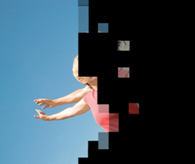Computer-based therapy gives dramatic improvement to stroke-based blindness
7 Feb 2011
NovaVision, developer of non-invasive vision restoration therapy (VRT), has found that nearly 90% of VRT patients surveyed cited at least one significant improvement in their functionality as a result of its therapy and 88% of patients noted a considerable improvement in overall quality of life.
VRT clinical studies have further shown measurable vision gain in more than two thirds of cases.
Millions of people worldwide suffer from neurological vision loss due to brain or optic nerve injuries from stroke, tumours, or trauma — often needlessly. For many, such partial blindness can be reversed and a measure of sight permanently restored with NovaVision’s non-invasive visual stimulation-based Vision Restoration Therapy (VRT) technology.
The science behind VRT has been validated by 15 years of academic research, with clinical studies published worldwide in more than 30 leading journals. All support the efficacy of NovaVision’s neurostimulation therapy approach which can be prescribed by any eye doctor, neurologist or physiatrist in the US.
“On average patients can permanently recover around 5° of central vision and, in some cases, dramatically more, which is a critical gain for conducting many daily activities,” notes Tom Bridges, NovaVision vice president of sales and marketing.
"While 5° may sound like a small difference", he continued, "clinical data shows it can have an exceptional impact on patient’s lives. This can be through decreased risk of collisions or falls — a well documented problem in those with vision loss — to reading, watching TV, grooming, hobbies and sports, and, in those cases with greater visual recovery, the ability to drive again. Perhaps most important is the fact that so many of our patients report they gained their self esteem and independence back to a much higher degree.
“Unlike other therapies that help patients simply compensate for, or adjust to, their vision loss, VRT can actually permanently restore visual function and, thus, has a more significant impact on a patient’s emotional and physical well-being. While other rehabilitation modalities such as speech, physical and occupational therapy have been established as a standard of care for stroke and traumatic brain injury victims, our innovative Vision Restoration Therapy addresses a previously unmet need for vision recovery.”
How VRT works
FDA-cleared in 2003, VRT has been proven to improve the vision and quality of life for stroke and brain injury survivors through daily non-invasive computer-based therapy sessions.
The company attributes the improvement to neuroplasticity, which is the ability of the nervous system to modify its structural and functional organization and reorganize in order to compensate for injury, as was initially identified by Gilbert and Weisel in 1990.
NovaVision’s VRT device uses the eyes as conduit to deliver light-based stimuli to the brain to trigger and accelerate neuroplasticity. The VRT diagnostic program maps areas where vision may be improved, while proprietary algorithms generate a customized neurostimulation strategy specific to each patient that activates the appropriate region within the brain's vision-processing areas.
VRT “rewires” the brain’s visual system and expands the visual field of the patient to a more normal level, permanently restoring a measure of lost vision.


Vision before VRT (left), and an 8.5 improvement after VRT (right)
Vision Restoration Therapy is performed at home on a leased, computerized device twice daily for six months. During each session, patients focus on a central point displayed on the device's screen and respond every time they see light stimuli appear.
The light stimuli are presented primarily in the areas at the border of the patient’s specific vision loss, and become detected more easily and deeper into the area of loss as therapy progresses and the visual field is expanded. Therapy is regularly updated and monitored with input from the patient’s prescribing physician. Patients are advised to take breaks during therapy and to take one day off from the therapy per week.